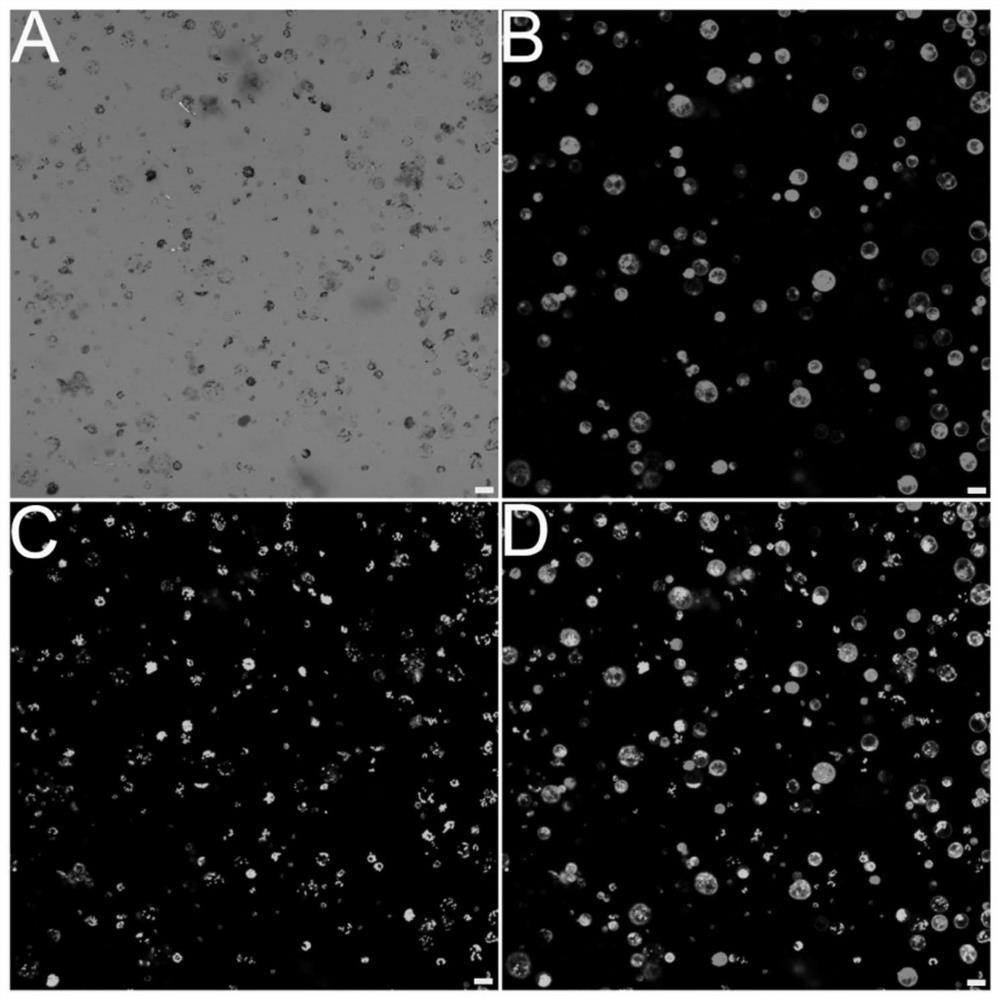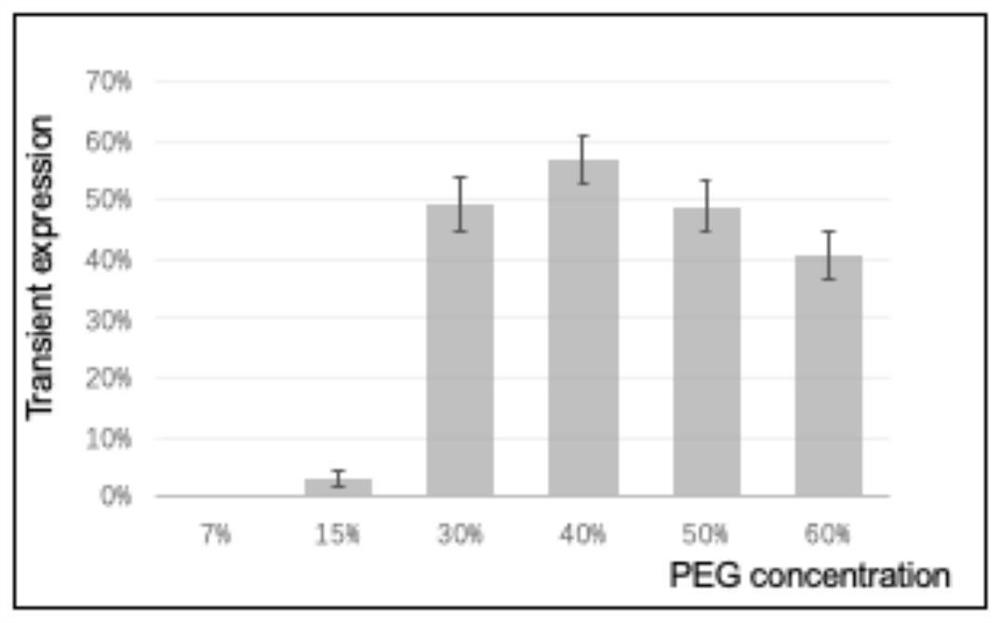Preparation of phyllostachys pubescens protoplast and establishment of transient conversion system
A protoplast and instantaneous transformation technology, applied in the field of genetic engineering, can solve the problems of limited genetic transformation system of forest trees and the inability to progress in research
- Summary
- Abstract
- Description
- Claims
- Application Information
AI Technical Summary
Problems solved by technology
Method used
Image
Examples
Embodiment 1
[0031] Embodiment 1: the preparation method of moso bamboo protoplast
[0032] Step (1). The cultivation of bamboo seedlings:
[0033] First, the seeds of Phyllostachys edulis were sterilized with 75% alcohol for 5 min, ddH 2 O rinse 3 times, rinse off the alcohol on the surface of Phyllostachys pubescens as much as possible. with ddH 2 Spread the O-infiltrated filter paper in a petri dish, spread the sterilized moso bamboo seeds inside, rinse with warm water in the morning and evening, keep the moso bamboo seeds moist, and culture them at 25°C in the dark. After a week or so, the bamboo seeds will turn white, and then transfer the white bamboo seeds to a place filled with ddH 2 O in a hydroponic box, placed in a light incubator for cultivation, and the cultivation temperature was controlled at 25°C. First, light with a light intensity of 10,000lx was used for 14 hours, and then placed in the dark for 10 hours. Watered once every 2 days, about 25 days. Moso bamboo seedling...
Embodiment 2
[0046] Example 2: PEG-Ca 2+ Transient Transformation of Phyllostachys pubescens Protoplasts
[0047] Step (1). Prepare a PEG solution with a concentration of 40% (ready to use, it can be prepared 1 hour before conversion), and bathe in a 50°C-60°C water bath until the PEG solid is completely dissolved.
[0048] Step (2). Add 10 μl of 3 μg / μl GFP DNA to be transformed into a 2 ml round bottom centrifuge tube, add 100 μl of protoplast suspension, and mix gently.
[0049] Step (3). Slowly add 110ul of PEG solution to the mixture, control the injection time of each sample at 1min, mix gently, and incubate the transformation mixture at 25°C for 10-25 minutes in the dark.
[0050] Step (4). The mixture was added to 440 μl of W5 solution to stop the transformation process, then mixed upside down, and centrifuged at 150×g for 1 minute at room temperature (increasing speed 9 decelerating 2).
[0051] Step (5). Remove the supernatant, add 1ml of W5 solution, and incubate in the dark a...
PUM
 Login to View More
Login to View More Abstract
Description
Claims
Application Information
 Login to View More
Login to View More - R&D
- Intellectual Property
- Life Sciences
- Materials
- Tech Scout
- Unparalleled Data Quality
- Higher Quality Content
- 60% Fewer Hallucinations
Browse by: Latest US Patents, China's latest patents, Technical Efficacy Thesaurus, Application Domain, Technology Topic, Popular Technical Reports.
© 2025 PatSnap. All rights reserved.Legal|Privacy policy|Modern Slavery Act Transparency Statement|Sitemap|About US| Contact US: help@patsnap.com



